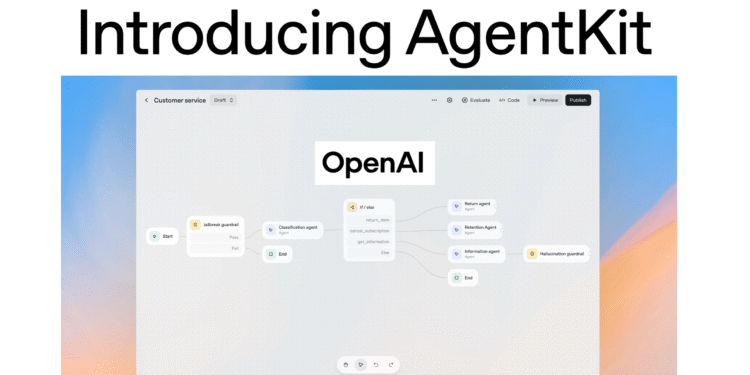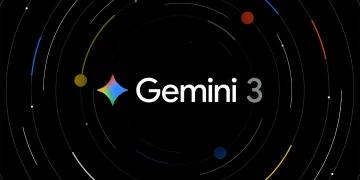OpenAI has just released AgentKit, and developers are already calling it a complete paradigm shift. This new toolkit promises to turn the complex process of building AI agents from a months-long struggle into an afternoon project.
The announcement came at OpenAI’s Dev Day 2025, where CEO Sam Altman demonstrated live agent creation in under eight minutes. Companies like Ramp have already slashed their development cycles by 70%, while Japanese tech giant LY Corporation built their first multi-agent workflow in less than two hours.
Visual Agent Building Changes Everything
AgentKit’s standout feature is Agent Builder, which functions like a visual canvas for creating AI workflows. Developers can drag and drop components, connect tools, and set up guardrails without writing complex orchestration code.
“Agent Builder transformed what once took months of complex orchestration, custom code, and manual optimizations into just a couple of hours,” Ramp’s team reported.
The visual approach addresses a major pain point. Previously, developers needed to juggle fragmented tools, manage custom connectors, and build evaluation pipelines from scratch. AgentKit consolidates these requirements into a single platform.
The system supports preview runs, inline evaluation configuration, and complete version control. This means teams can iterate quickly and track changes across development cycles.
ChatKit Simplifies Agent Deployment
Beyond building agents, AgentKit tackles deployment challenges with ChatKit. This embeddable toolkit handles streaming responses, thread management, and in-chat experiences that previously required weeks of frontend development.
Companies can customize ChatKit to match their brand and integrate it directly into existing applications. HubSpot already uses ChatKit for their customer support agents, demonstrating real-world enterprise adoption.
The toolkit manages complex technical details like showing model reasoning, handling user authentication, and creating engaging conversational flows. Developers no longer need to build these components from scratch.
Enterprise-Grade Security and Governance
AgentKit includes a Connector Registry that gives enterprise administrators centralized control over data access and tool connections. This addresses security concerns that have slowed AI agent adoption in large organizations.
The registry works across ChatGPT and the API, consolidating data sources into a single admin panel. It includes pre-built connectors for popular enterprise tools like Dropbox, Google Drive, SharePoint, and Microsoft Teams.
Additionally, AgentKit integrates Guardrails, an open-source safety layer that protects against unintended behavior. These guardrails can mask personally identifiable information, detect jailbreak attempts, and apply custom safety measures.
Reinforcement Fine-Tuning Pushes Performance Boundaries
AgentKit introduces reinforcement fine-tuning capabilities, currently available on OpenAI o4-mini and in private beta for GPT-5. This feature allows developers to customize reasoning models for specific use cases.
The system includes custom tool calls training, which teaches models when and how to use specific tools. Custom graders let developers set evaluation criteria that matter most for their applications.
Standard API Pricing Keeps Costs Predictable
All AgentKit tools operate under OpenAI’s standard API model pricing. Developers pay only for actual usage rather than separate licensing fees for the development platform itself.
This pricing approach makes AgentKit accessible to startups and enterprise teams alike. Companies can experiment with agent development without significant upfront investments.
Developer Adoption Already Accelerating
Beyond Ramp’s 70% cycle reduction, LY Corporation’s rapid deployment demonstrates AgentKit’s accessibility across different technical environments.
The live demonstration at Dev Day, where an OpenAI engineer built complete workflows in minutes, provides concrete evidence of the platform’s efficiency claims.
AgentKit’s beta rollout targets API customers, ChatGPT Enterprise, and Education users with Global Admin Console access. The company plans to expand availability and add standalone Workflows API and ChatGPT deployment options soon.
For developers building AI agents, AgentKit presents a significant reduction in technical barriers. The combination of visual development, integrated deployment, and comprehensive evaluation tools addresses the main friction points that have slowed agent adoption.
Whether AgentKit can maintain its ease-of-use promise as workflows become more complex remains to be tested. However, the early results from enterprise partners suggest OpenAI has created a genuinely useful development platform.














